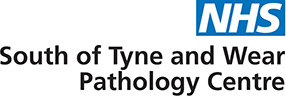Pneumococcal Serotypes – Referral
Code:
PNES
Sample Type:
2mL Serum (Gel 5mL Yellow tube)
Ref Ranges/Units:
mg/L
Putative protective antibody level is >/= 0.35 mg/L
Turnaround:
4 Weeks
Frequency of Analyses: Referred to Sheffield Hospital, sent every day except Friday
Special Precautions/Comments:
Method: Referred to Sheffield Hospital, sent every day except Friday
Interferences: None known.
Interpretation: Discuss with Consultant Immunologist.
This would depend on the type of the assay used and purpose of analysis.
The WHO recommendations [6] are based on the evaluation of minimal response criteria for evaluation of new vaccines which have widely become used as cut-off’s in clinical laboratories.
There is no consensus about the cut off’s when evaluating what would constitute a deficient immune response when evaluating immune deficiency as immune competent individuals make responses far more than the “minimal response criteria” set by WHO for efficacy of vaccines.
CWPS is present in various amounts in the ELISA well coat and in the commercially available vaccine. Antibodies to CWPS do not confer any protection against pneumococcal disease.
WHO recommendation for minimal vaccine response – 0.35 µg/ml with ELISAs not using CWPS pre-adsorption.
WHO recommendation for minimal vaccine response for ELISAs using pre-adsorption with CWPS and 22F- 0.20 µg/ml
There is variability in the criteria used to define an adequate response to the pneumococcal vaccine but some consider a normal response as a 2-fold or more increase in antibody titer, or an absolute increase to 0.3 mg/L in 8 or more of the 12 serotypes tested [7].
Additional Information:
Indication: Immunodeficiency and vaccine responses.
Background Information:
A semi quantitative relationship exists between disease protection and specific antibody titres. These thresholds are not absolute and infection may occur depending on other variables like infective dose, virulence, innate and adaptive immune status of host and antibody efficiency.
The cut-off protective levels are only a “correlate” on the quantitative assay standardised against a functional assay.
Over 90 serotypes of S. Pneumonia have been characterised on the basis of antigenic differences in their capsular polysaccharides. In the American numbering system, serotypes are numbered from 1 to 90 in the order they were identified.
The more widely accepted Danish system distinguishes groups of serotypes according to antigenic similarities. For example Danish serogroup 19 includes 19F, 19A, 19B and 19C (letter F for first member of the group, followed by A, B etc) which in the American system would be types 19, 57, 58 and 59 respectively.
The distribution of pneumococcal serotypes causing invasive disease differs between children and adults.
The so-called paediatric serotypes are serotypes 6A, 6B, 9V, 14, 19A, 19F and 23F. All these serotypes commonly colonize young infants and most strains that are multi-resistant to antibiotics belong to these serotypes.
Serotypes 1 and 5, which are important invasive serotypes in developing countries, are rarely carried in the nasopharynx and thus are less commonly resistant to antibiotics — it is hypothesized that most selection for antibiotic resistance takes place in the nasopharynx.
Serotype 1 is a relatively uncommon cause of invasive disease in adults in the United States but remains important in the adult population in most other parts of the world.
The most prevalent serotypes in the UK currently are 14, 9V, 1, 8, 4, 3, 23F, 6B, 19F, 7F, 19A and 6A [1].
There are two types of pneumococcal vaccine – Prevnar and Pneumovax.
Assays for antibody responses to S. pneumoniae are of two types, Total pneumococcal IgG antibody to Pneumovax and those that measure serotype specific antibodies. Both are ELISA based. The current ESID guidance recommends the use of unconjugated vaccine for diagnosing immunodeficiency by monitoring IgG responses to booster immunisations.
Antibody efficiency:
1/3rd of the adults who are hospitalised with pneumococcal pneumonia have antibody to their infecting serotype at the time of admission, but this antibody is non–opsonic in vitro. Thus although ELISA antibody (specific) titre are used as correlate of functional antibody activity it is at best an estimate.
In studies of response to Prevnar [2,3,4], it was observed that a concentration of at least 0.15mg/L to each of the 7 serotypes was obtained in more than 95% of children receiving three doses of conjugate vaccine, whereas levels in 95% of non-vaccinated controls were below 0.5mg/L.
In an European study [4], the lower 5th percentile (cut-off) concentrations for the post immunization antibody titre in healthy individuals were 0.67mg/L, 0.45mg/L, 0.46mg/L, 0.31mg/L, and 1.04mg/L for serotypes 3, 4, 9N, 18C, and 19F respectively.
The pneumococcal vaccine pneumovax is 23-valent and it is possible to test for the individual antibody serotypes in response to this vaccine. Defining the serotype antibody responses to be measured and the cut-offs to be used is variable and does not take into account the differences in immunogenicity of the different serotypes [5]. Use of the conjugated vaccine will have an influence on the choice of serotypes tested [4]. Once a patient has been vaccinated with Prevnar, the serotypes 4, 6B, 9V, 18C, 19F and 23F can no longer be used because the evaluatio would assess response to protein antigens rather than polysaccharide antigens [5].
References:
http://www.hpa.org.uk/webw/HPAweb&HPAwebStandard/HPAweb_C/1195733813840?p=1200577814432–2008. [Ref 1]
Paris K, Sorensen RU. Assessment and clinical interpretation of polysaccharide antibody responses. Ann Allergy Asthma Immunol. 2007. 99(5):462-464. [Ref 2]
Balmer P, Cant AJ, Borrow R. Anti-pneumococcal antibody titre measurement: what useful information does it yield? J. Clin. Path. 2007. 60:345-350. [Ref 3]
Hazlewood M, et al. The acquisition of anti-pneumococcal capsular polysaccharide Haemophilus influenzae type b and tetanus toxoid antibodies, with age, in the UK. Clinical and Experimental Immunology. 2008. 93(2):157-164. [Ref 4]
Jeurissen A, et al. Laboratory diagnosis of specific antibody deficiency to pneumococcal capsular polysaccharide antigens. Clin Chem. 2007. 53(3):505-510. [Ref 5]
http://www.who.int/vaccines/en/pneumococcus.shtml#protective-2007. [Ref 6]
Wood P. Primary antibody deficiency syndromes. Annals of Clinical Biochemistry. 2009. 46:99-108. [Ref 7]
See Also: Pneumococcal antibodies, tetanus antibodies, and haemophilus influenzae type B antibodies
Telephone Gateshead Lab: 0191.4456499 Option 4, Option 1


